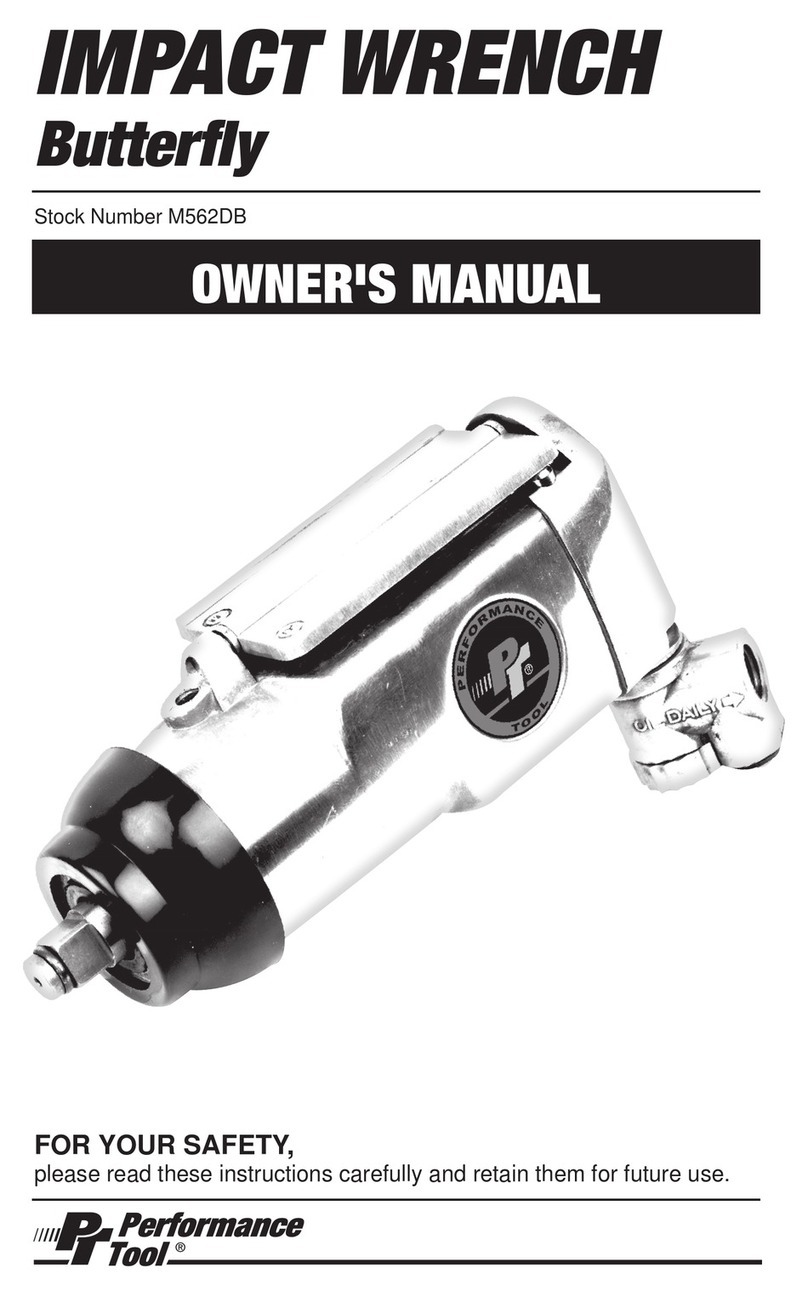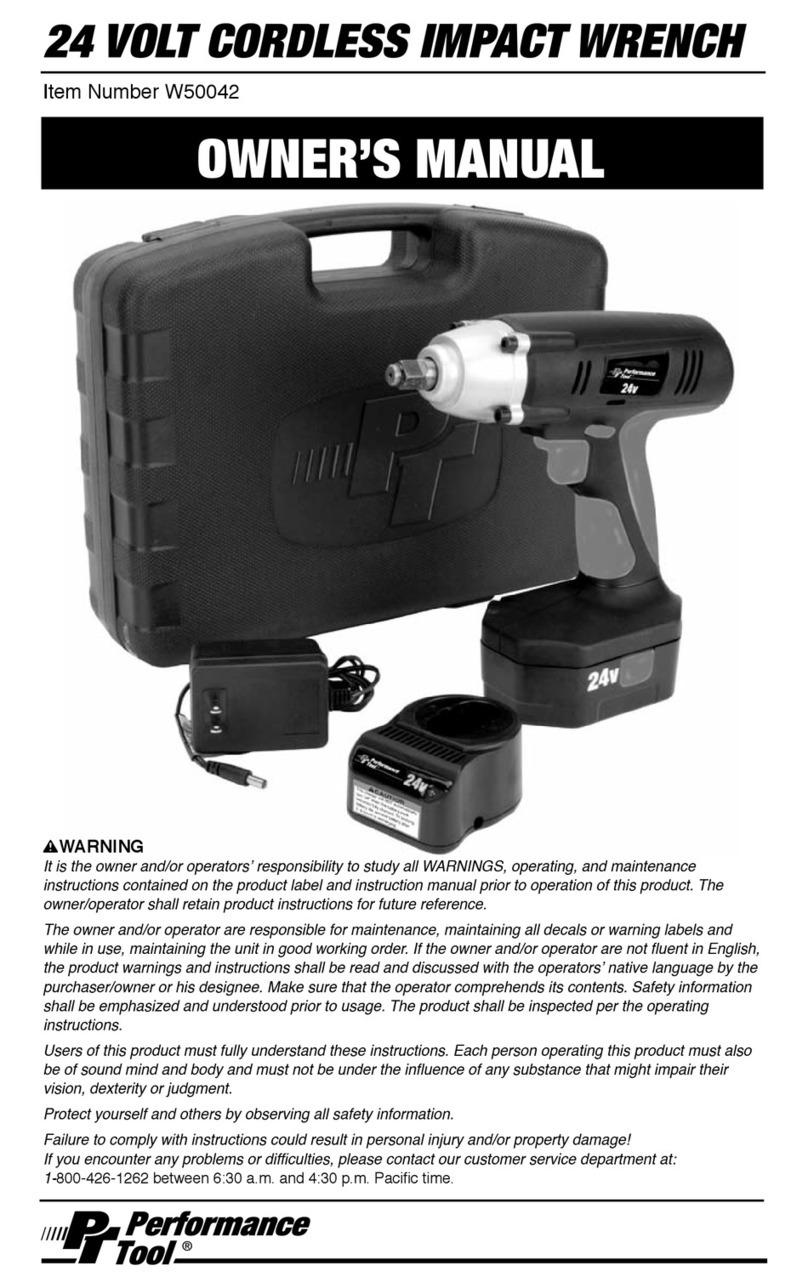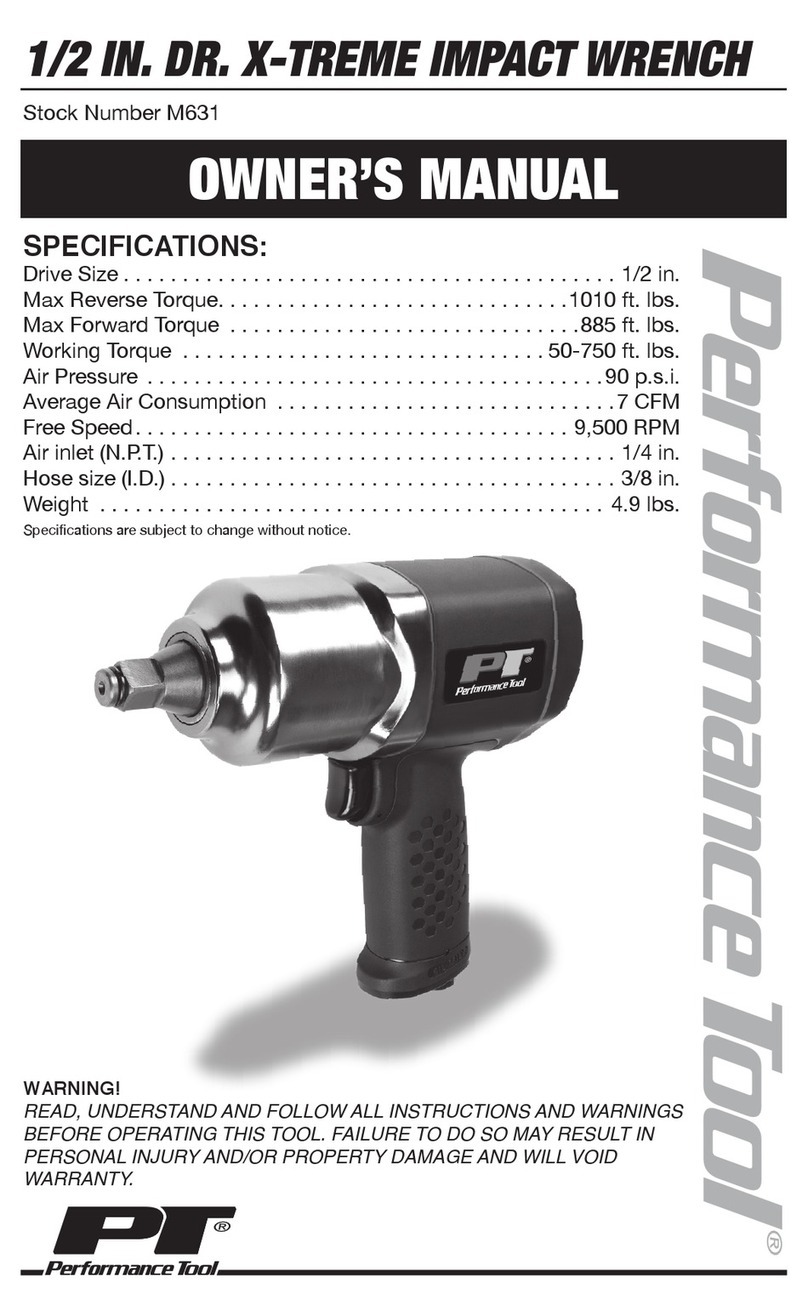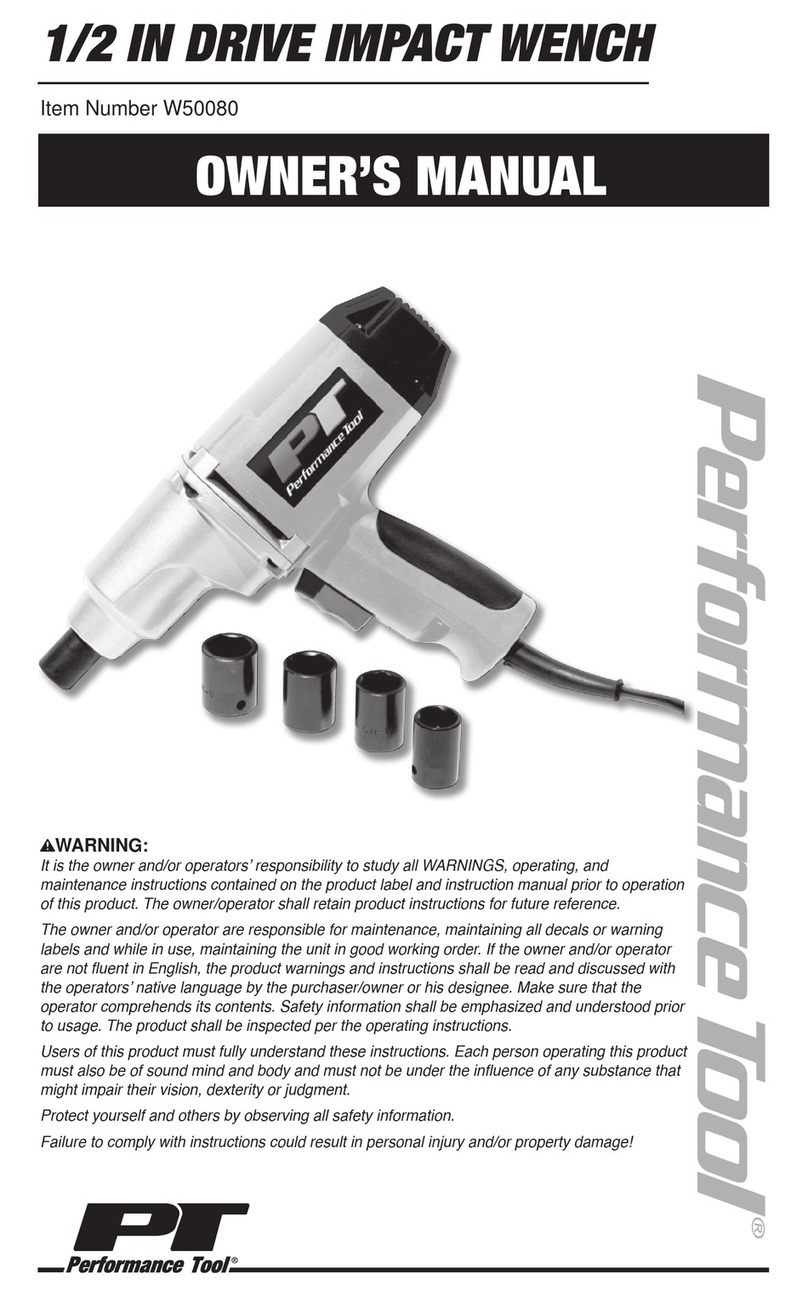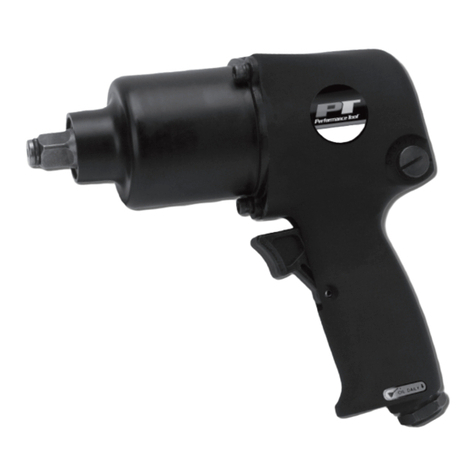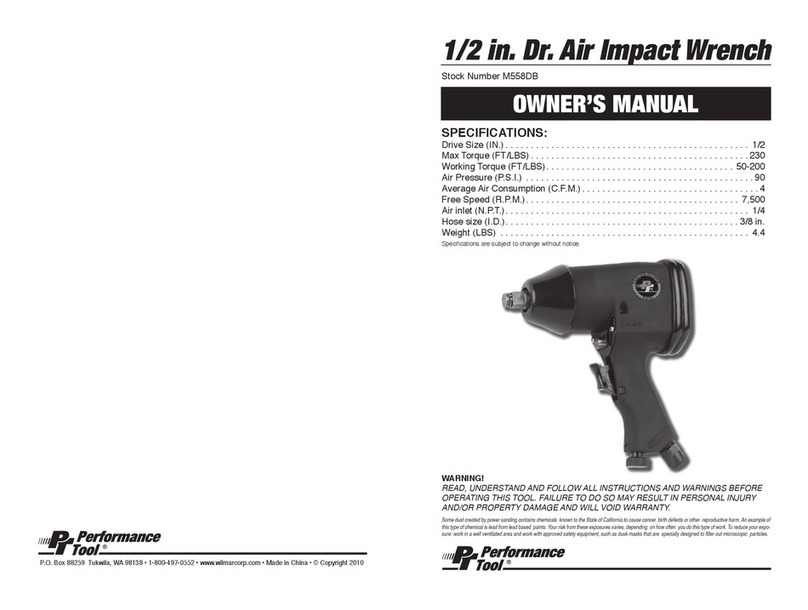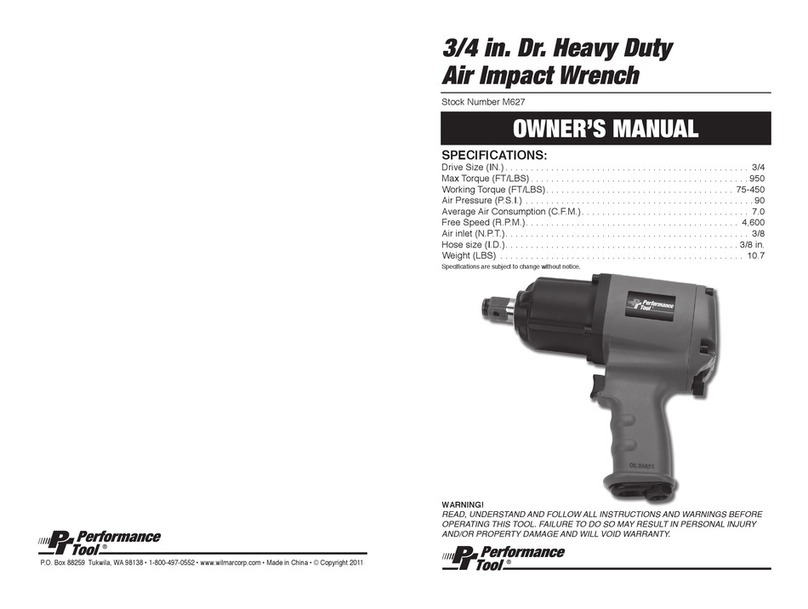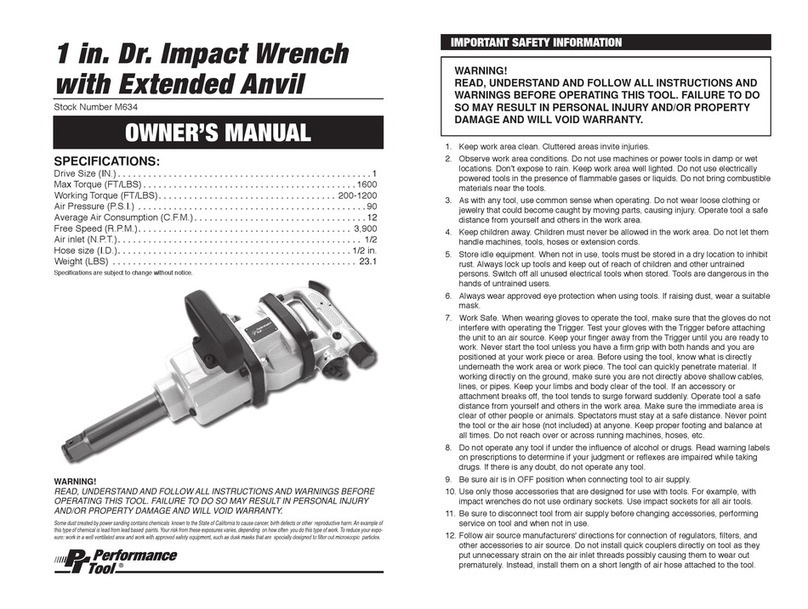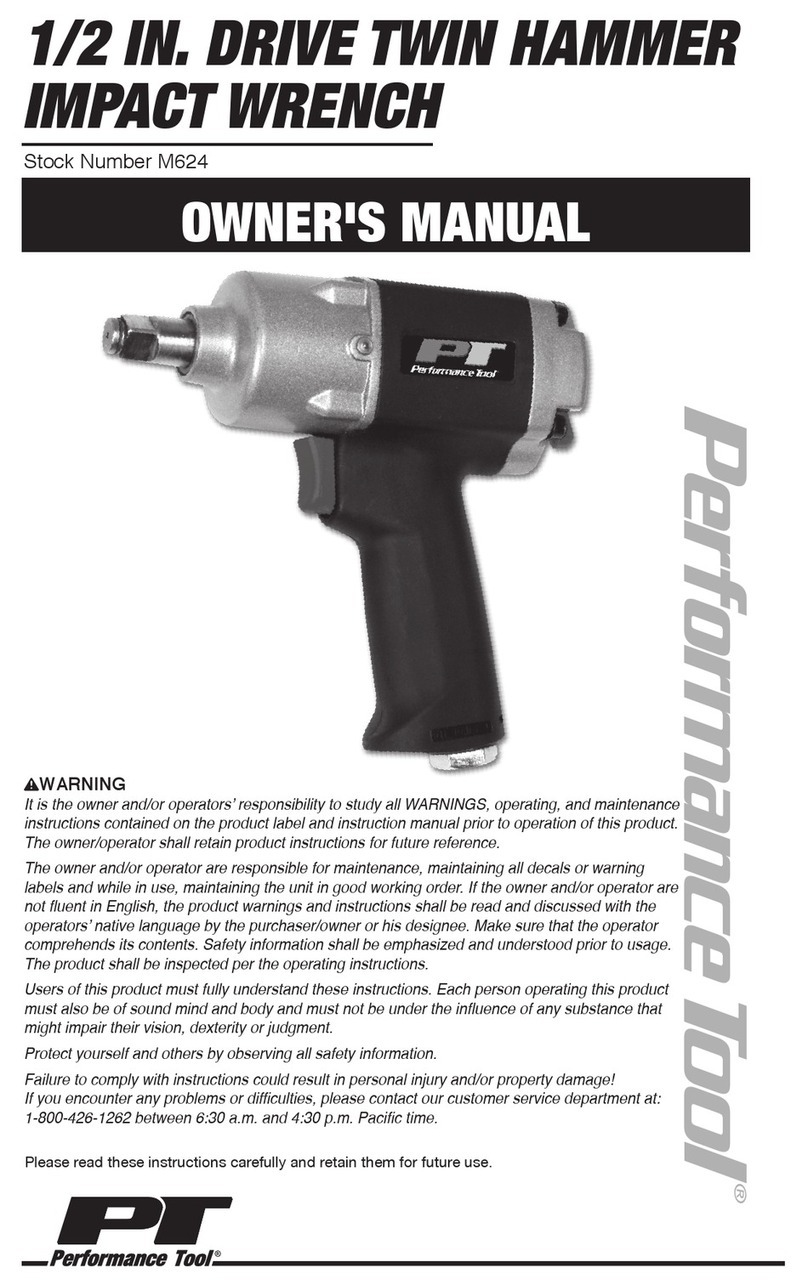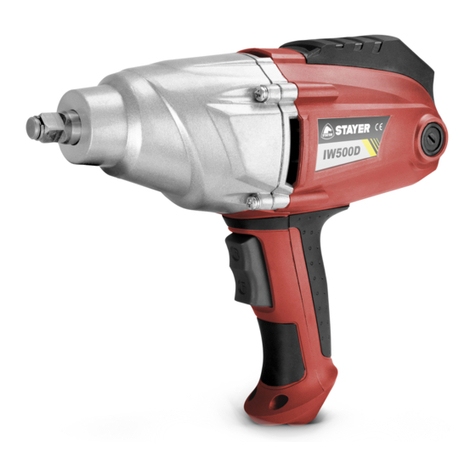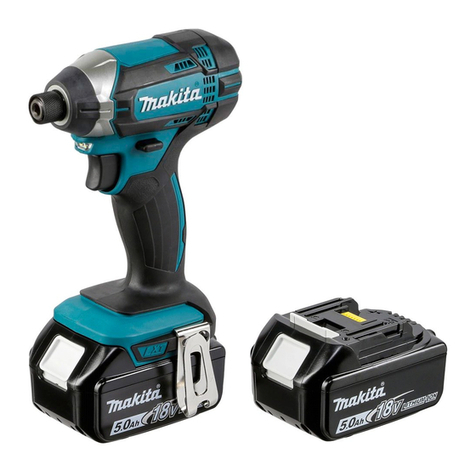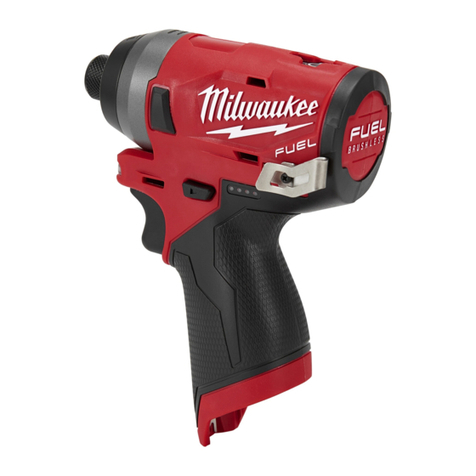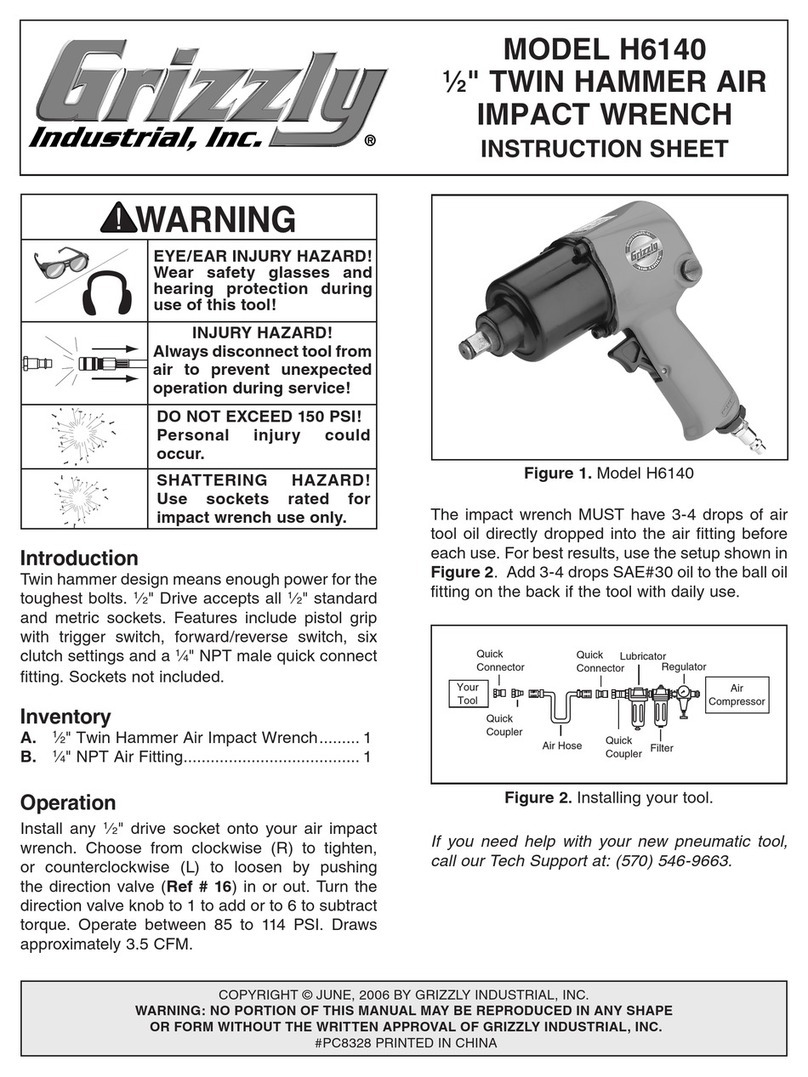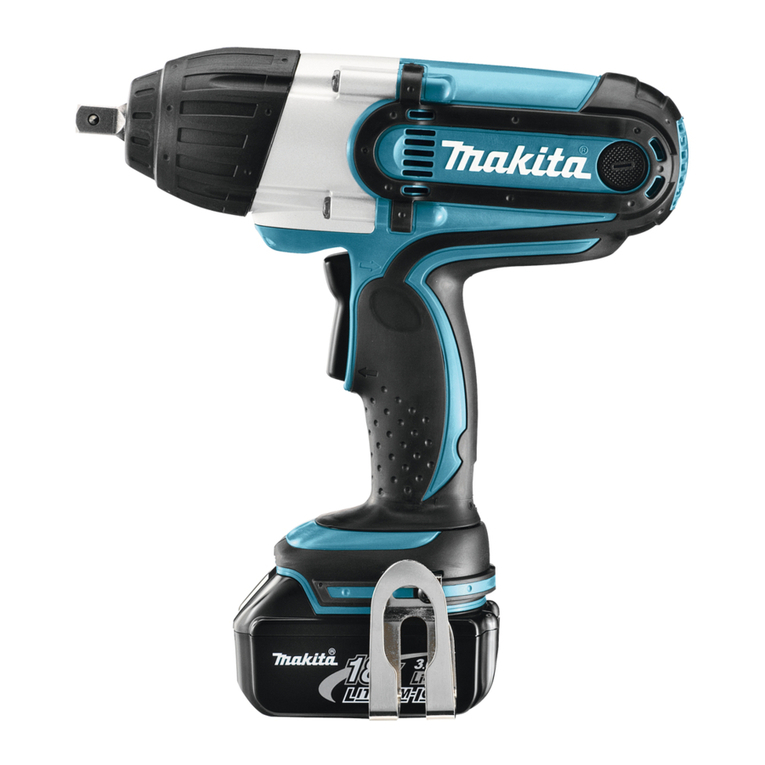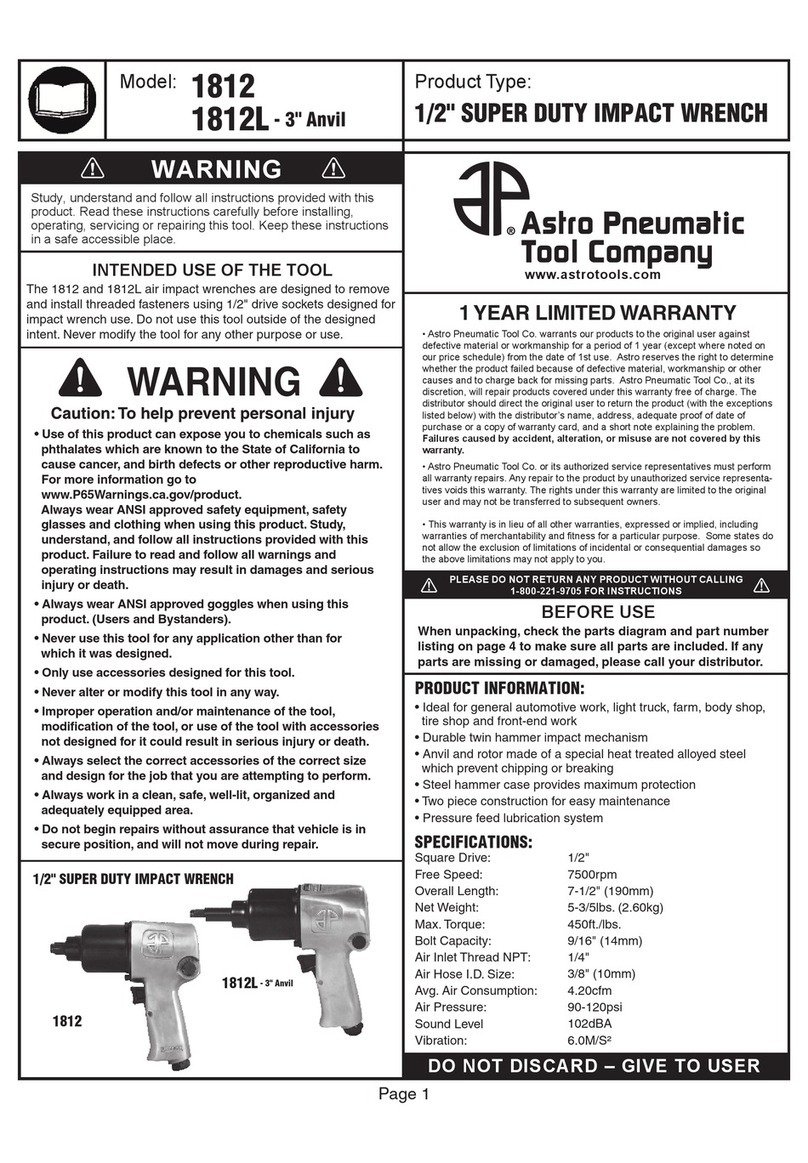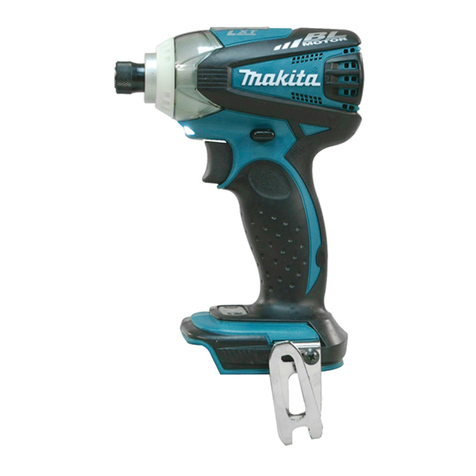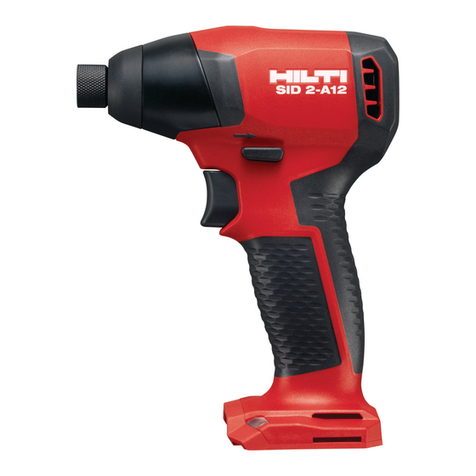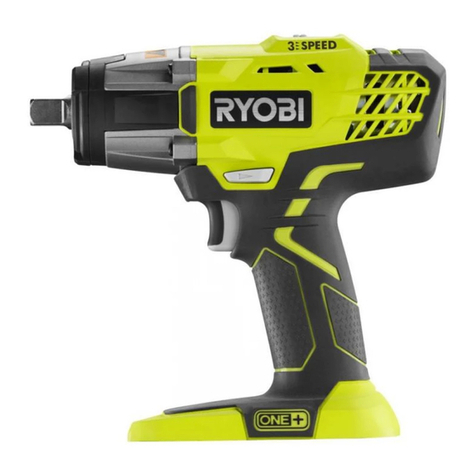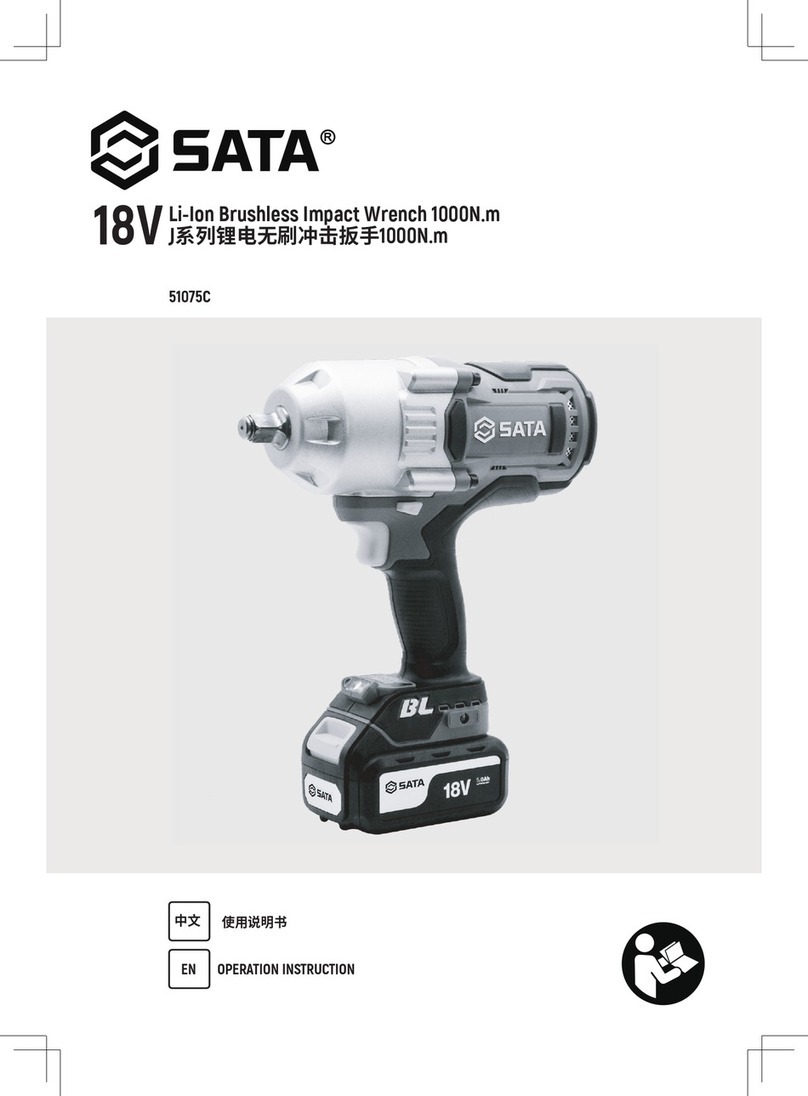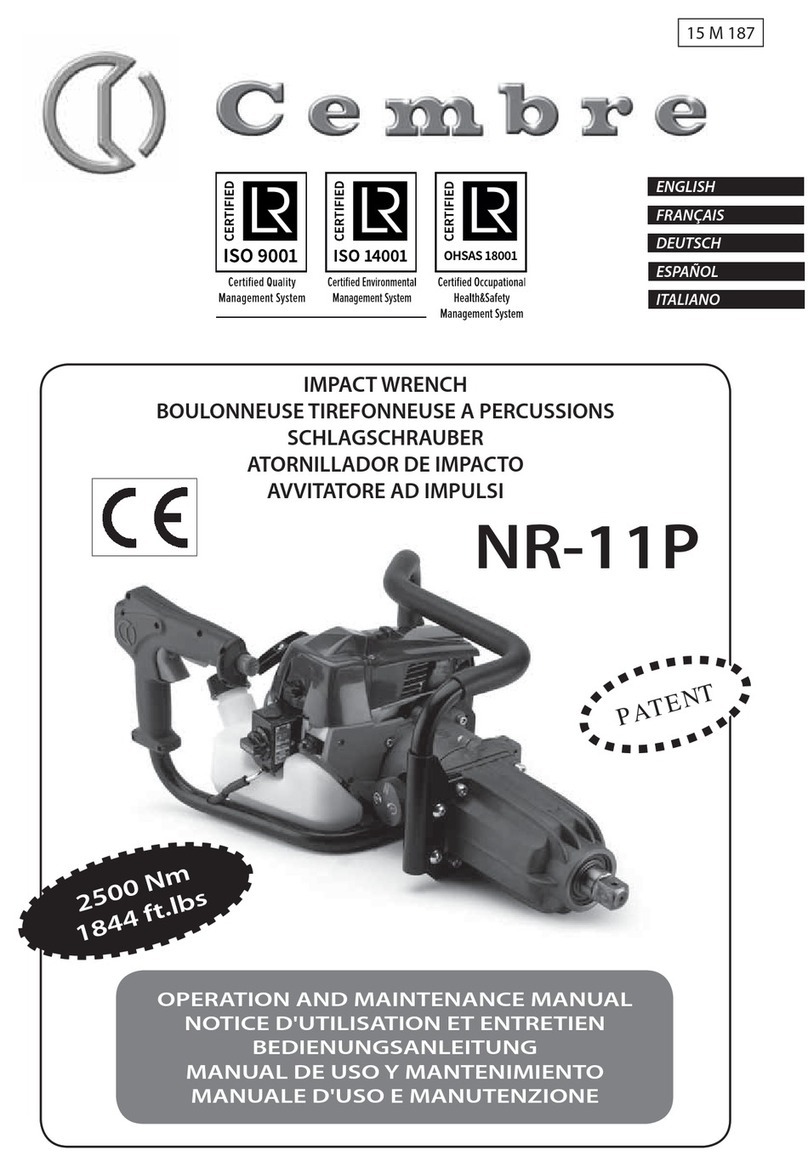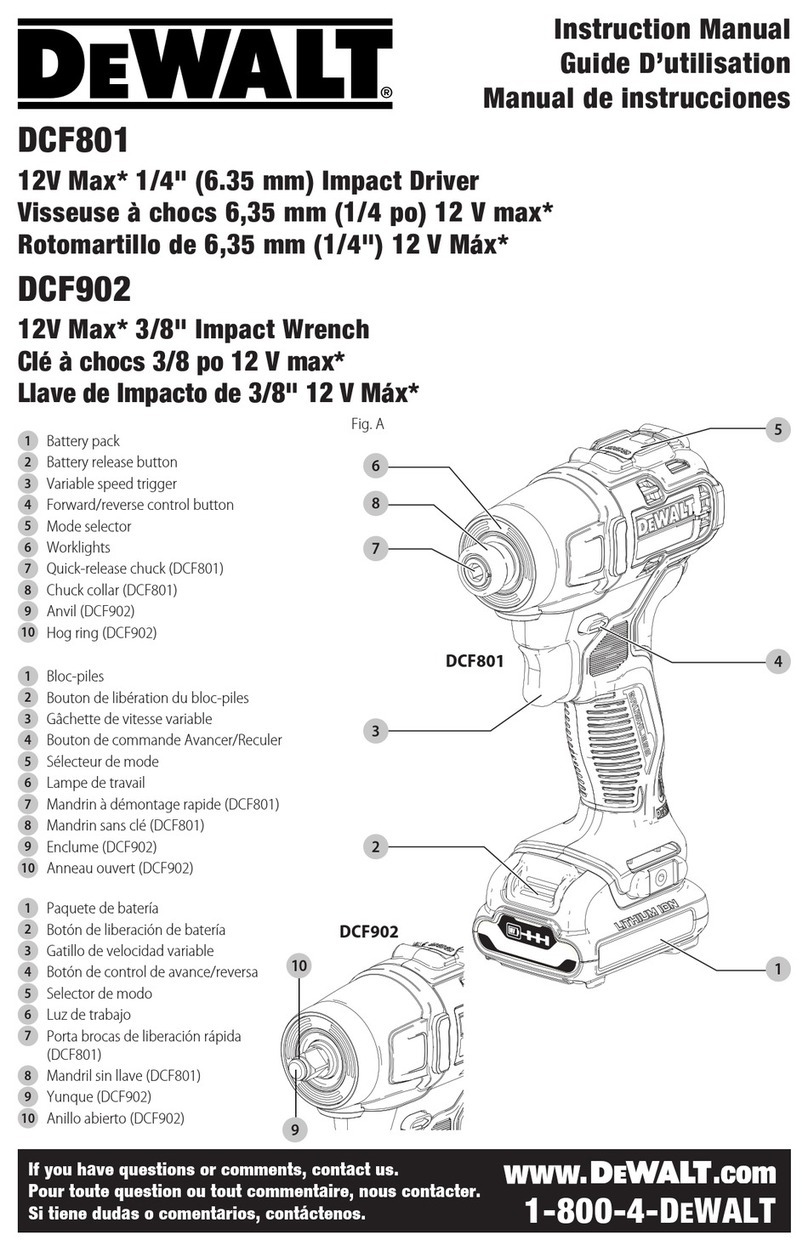1. This impact wrench is rated to 1/2 in. USS bolt size. Rating will decrease for U-bolts,
long cap screws, spring fasteners and rusted or corroded fasteners. All of these factors
absorb power and reduce torque capability.
2. Use the simplest socket to wrench hook-up. Any additional extensions, U-joints or
adaptors will absorb power and reduce torque capability.
3. Use only impact sockets designed for impact wrenches.
4.
Forward/Reverse Lever. Select “F” for Forward (clockwise) or “R” for Reverse (counter-
clockwise) operation. Do not attempt to change direction while tool is running.
5.
If fastener bogs, slows or binds the tool, or if the fastener fails to move after 5 seconds,
use a larger size impact wrench with a higher torque rating. Overloading this tool will cause
premature wear and/or permanent damage to internal and external drive parts and will void
warranty.
6. The air regulato
r can be used as an air throttle. Turn air regulator knob out (counter-
clockwise) for maximum power.
7. Torque setting: To set the tool to desired torque, select a fastener of known tightness of
the same size, thread pitch and thread condition as those on the job. Turn air regulator to
lowest position. Apply wrench to (turn regulator out) until fastener moves slightly in the
direction it was originally set. The
wrench is now set to duplicate the
torque applied to this fastener.
Critical torque specifications cannot
be met by any wrench in this class.
Use an appropriate torque wrench
to obtain a specific torque.
IMPORTANT SAFETY INFORMATION
ASSEMBLY & INSTALLATION
NOTE: For best service you should incorporate an oiler, regulator, and inline lter, as
shown in the diagram above.
1. You will need to prepare a 1/4” quick air connector to connect to the air source
hose. Wrap the 1/4” quick air connector with pipe thread seal tape (not included)
before threading it onto the 3/8” air source hose. Then, connect the 1/4” quick air
connector to the Air Inlet on the tool. Note: If you are not using an automatic oiler
system, before operation, add a few drops of Pneumatic Tool Oil to the airline
connection. Add a few drops more after each hour of continual use.
2. Set the air pressure on your compressor to 90 PSI. Do not exceed the testing air
pressure of 90 PSI.
3. Check the air connection for leaks. Once you are satised there are no leaks, turn
off the air compressor and disconnect the tool.
11. Follow air source manufacturers' directions for connection of regulators,
lters, and other accessories to air source. Do not install quick couplers
directly on tool as they put unnecessary strain on the air inlet threads possibly
causing them to wear out prematurely. Instead, install them on a short length
of air hose attached to the tool.
12. Check for damaged parts. Before using any tool, any part that appears dam-
aged should be carefully checked to determine that it will operate properly
and perform its intended function. Check for alignment and binding of moving
parts; any broken parts or mounting xtures; and any other condition that may
affect proper operation. Any part that is damaged should be properly repaired
or replaced by a qualied technician.
13. Maintenance. For your safety, maintenance should be performed regularly by
a qualied technician using original PERFORMANCE TOOLS® replacement
parts. Failure to do so can lead to accidents for the operator. Use of any
other parts will void the warranty. Only use accessories intended for use with
this tool. Approved accessories are available from Performance Tool®. Use
only accessories that are recommended by the manufacturer for your model.
Accessories that may be suitable for one tool may become hazardous when
used on another tool.
WARNING: This product and its packaging contain a chemical known to the State of
California to cause cancer, birth defects, or other reproductive harm.
WARNING: The warnings, cautions, and instructions discussed in this instruction manual
cannot cover all possible conditions and situations that may occur. It must be understood
by the operator that common sense and caution are factors which cannot be built into this
product, but must be supplied by the operator. Read and understand all of the instructions
provided in the instruction manual of this product, as well as, any other tool (s) used with
this product.
Clean air of correct air pressure is recommended for the power supply for this tool. A
maximum of 90 PSI at the tool is recommended for most air tools of this class. Check
specifications section for recommended pressure. (Depending on length of air hose and
other circumstances, air pressure at compressor may need to be increased to 100 PSI to
ensure 90 PSI at the tool.)
Water in the air hose and compressor tank contributes to reduced performance and
damage of the air tool. Drain the air tank and filters before each use and as necessary to
keep the air supply dry.
Hose length over 25’ causes loss in line pressure. Increase hose I.D. or increase
compressor pressure to compensate for the pressure loss. Use an in-line pressure
regulator with gauge if air inlet pressure is critical.
AIR SOURCE
OPERATION
LUBRICATION & MAINTENANCE
Oil tool before each use. 4 to 5 drops of a good grade Air Tool Oil placed in the
air inlet is sufficient. Use proper air pressure and CFM rating listed for this tool.
Drain water from hoses and compressor tank. Water in the air supply line will
cause gumming and loss of power. Clean the air filter on the supply line and
flush the tool with gum solvent or a 50/50 mix of air tool oil and kerosene. It may
be necessary to disassemble the tool to properly clean and re-lubricate.
